
Make a Dispenser Slot in the Coil Box
When you have a lot of flashing or trim to bend, it’s best to buy your coil stock in 50-ft. x 24-in. rolls. But don’t just pull the coil out of the box and cut the tape. If you do, the coil will start to unroll and be difficult to control. Dispensing coil from the box is the best way to keep it clean and prevent dents and scratches.
Cut an opening along one side of the box and pull out just the lengths you need. You may have to open one end of the box in order to cut the tape that secures the roll, and then reseal it with tape.
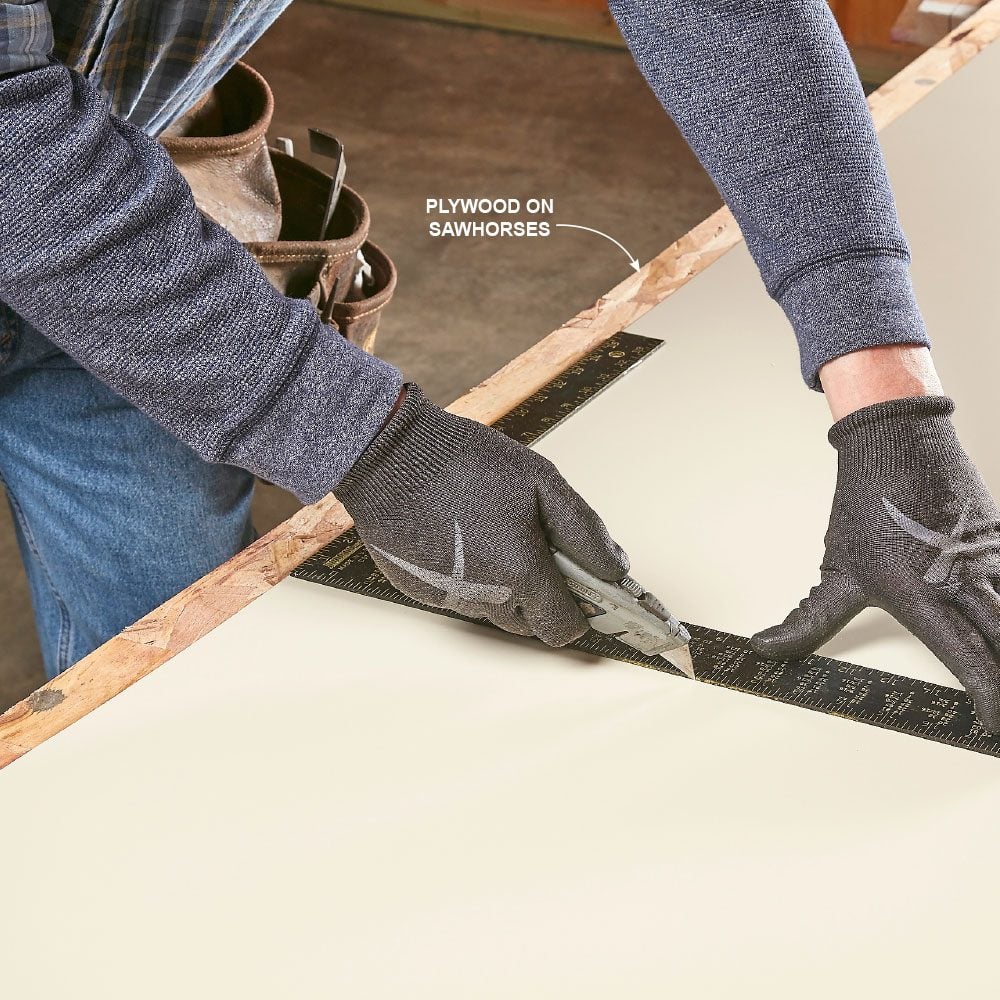
Score and Bend to Cut
Score the coil with a utility knife at the desired length. After scoring, bend the coil back and forth to separate the pieces. A carpenter’s square works great as a guide to keep the line straight. Swap out your utility knife blades as soon as they become dull. A dull blade won’t score the metal deep enough to separate the pieces easily. Build a cutting table out of a piece of plywood and a couple sawhorses.
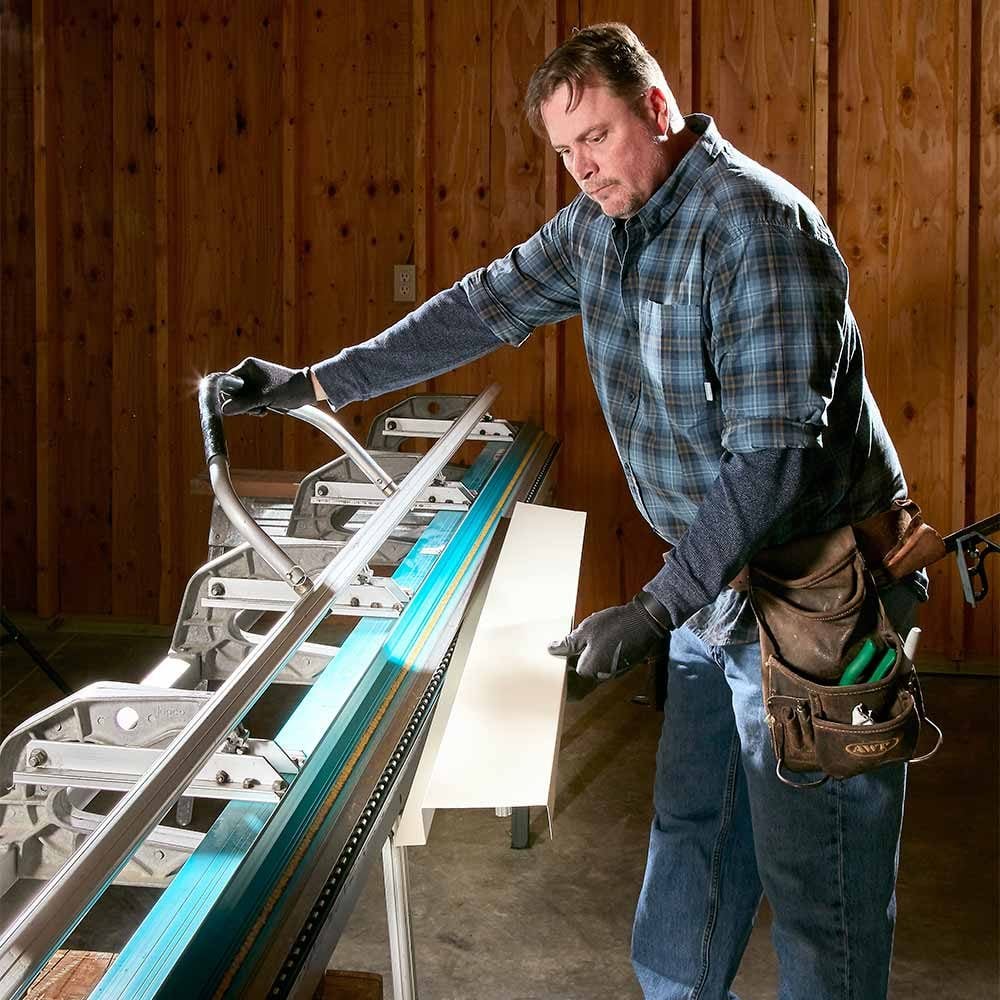
Trim Coil is Sharp!
Always wear gloves. Leather and coated gloves offer more protection than cloth gloves. Set up the brake in a garage or on a side of the house protected from wind. You don’t want to wreck expensive coil, and it’s always best to keep razor-sharp metal from flying around in the wind.

Remove a Mar With an Eraser
An eraser won’t fix a scratch in the paint, but a mar is another story. A mar on a trim piece is most often caused by the aluminum coil rubbing against a sharp aluminum edge of the brake. Mars look like scratches, but they can be removed with an eraser.
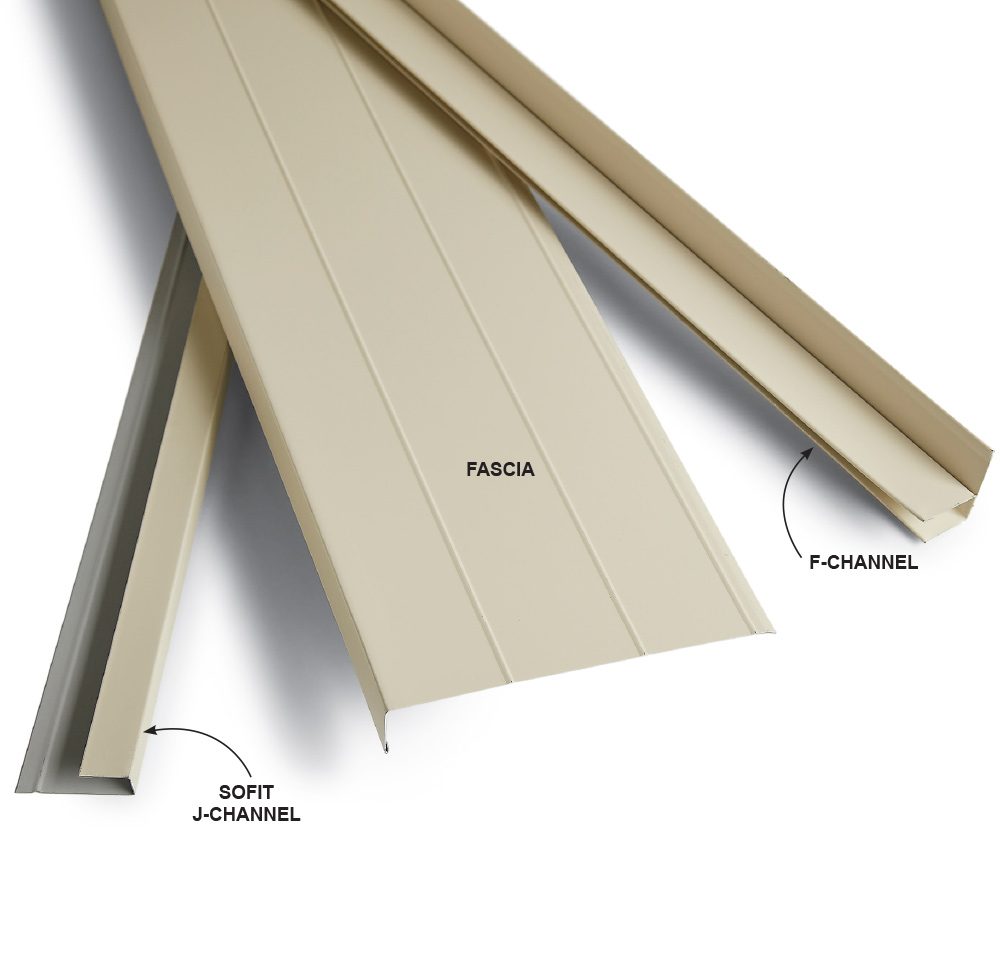
Buy pre-made when you can
Brakes are perfect for creating custom profiles, but there are many stock flashing and trim pieces to choose from. And just because it’s not on the shelf at the home center doesn’t mean it’s not available. Explain what you need at your home center’s lumber desk and see if it can be ordered for you.

Measure Bend Marks Three Times
Once your coil has been cut to size, it’s faster to measure each bend location individually than to mark them beforehand on the ends of the coil like you did when you cut the coil to width. Set the coil close to where you think it needs to be and pull the hemming handle forward, but not all the way into the locking position. Just pull it far enough so the locking anvil holds the coil snug but doesn’t pinch it tight.
Measure and adjust one end of the coil, then measure and adjust the other. Sometimes when you slide one end in or out, the other end tends to move a bit as well, so it’s important to double-check your first measurement to see if the coil is still where it needs to be. Hold the tape measure sideways so the numbers line up with the edge of the metal.
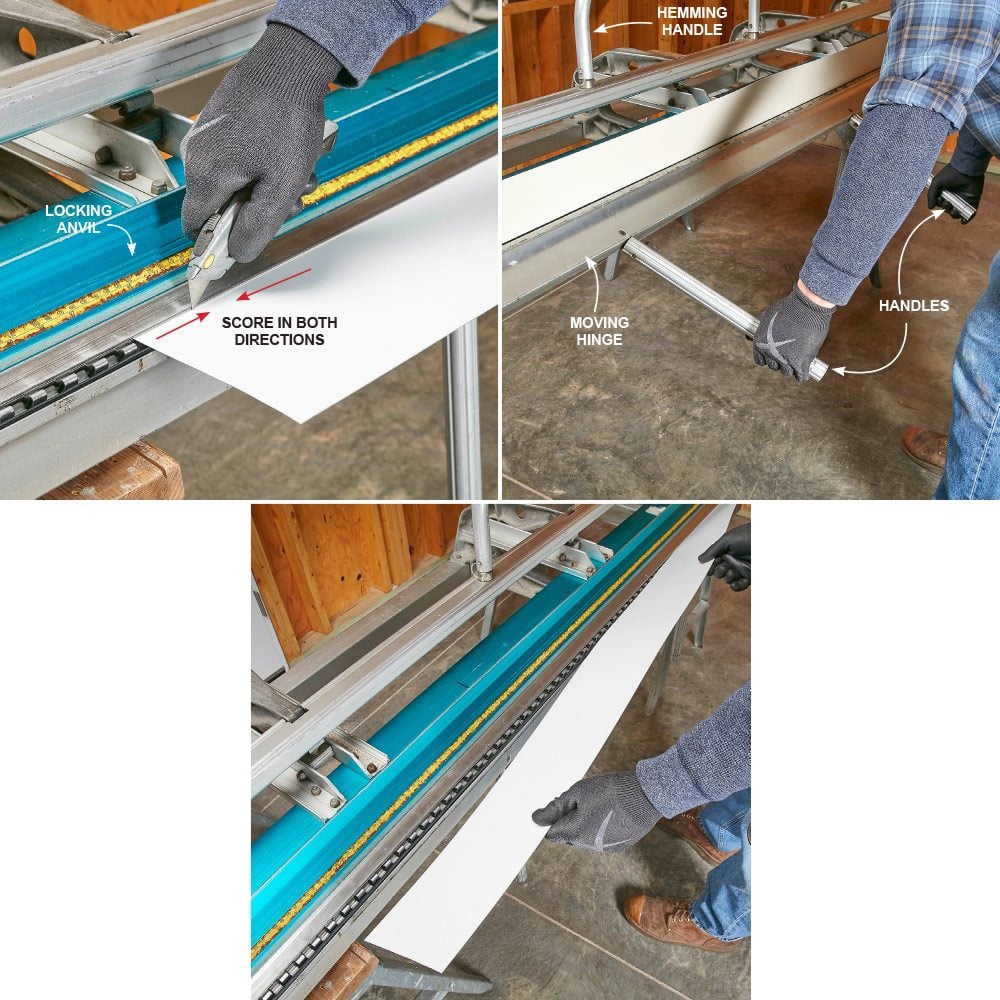
Cut to Width on the Brake
Step 1: Lock the coil into place with the hemming handle located at the top of the brake. Score the coil with a utility knife along the edge of the anvil.
Step 2: Once you’ve scored the entire length, pull up on the handles connected to the moving hinge, and bend the metal at about a 90-degree angle.
Step 3: Use your hands to bend it back down and separate the two cut pieces of metal.

Avoid Treated Wood
Chemically treated wood is extremely corrosive to aluminum. Cover treated wood with house wrap or felt paper before wrapping it in aluminum.
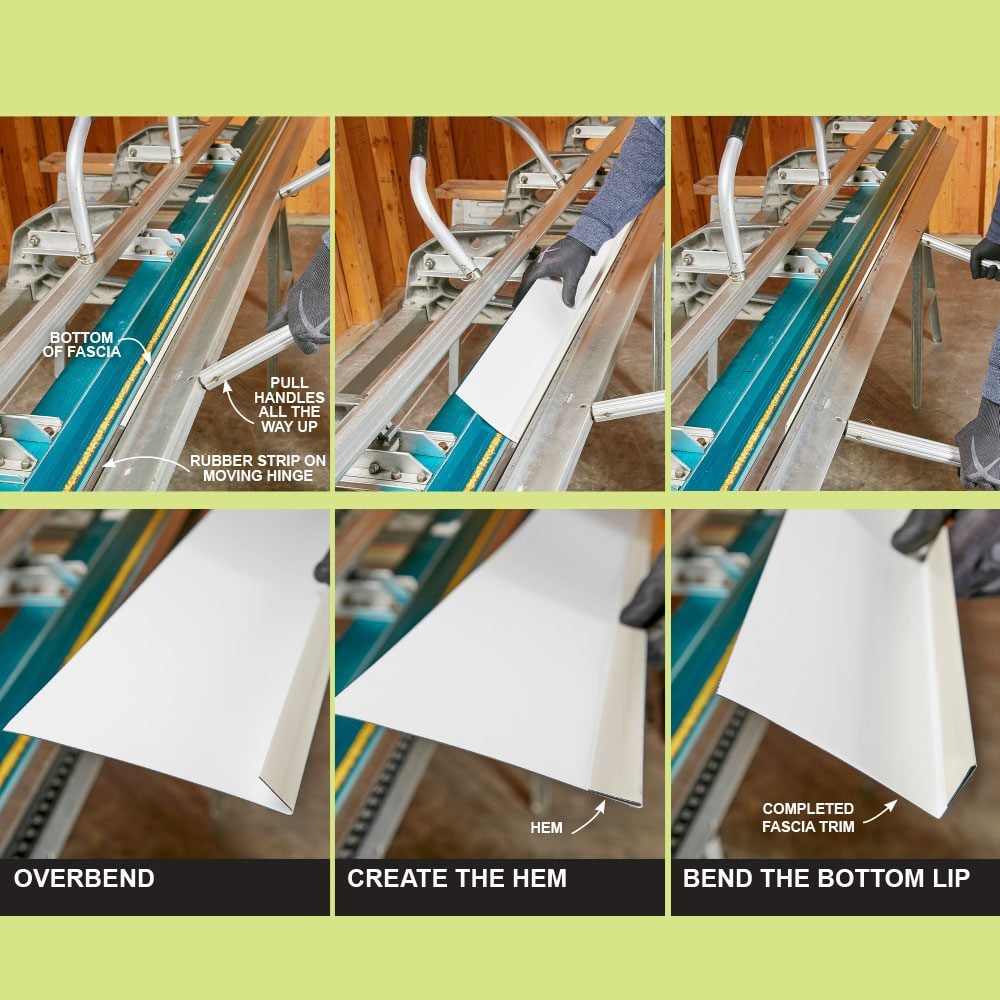
Add Strength With a Hem
A hem is an edge that has been completely folded over. Hems add strength to exposed edges on all sorts of profiles. Here’s how to make fascia trim with a hemmed bottom lip:
Step 1: Align the outside edge of the coil with the rubber strip on the moving hinge—no need to measure. Lock the coil into place and pull the handles up as far as they will go.
Step 2: Set the coil on top of the locking anvil and hold it down tight to the moving hinge. Pull up on the hinge handles to completely collapse the metal.
Step 3: The last step is to bend up the hemmed bottom lip.
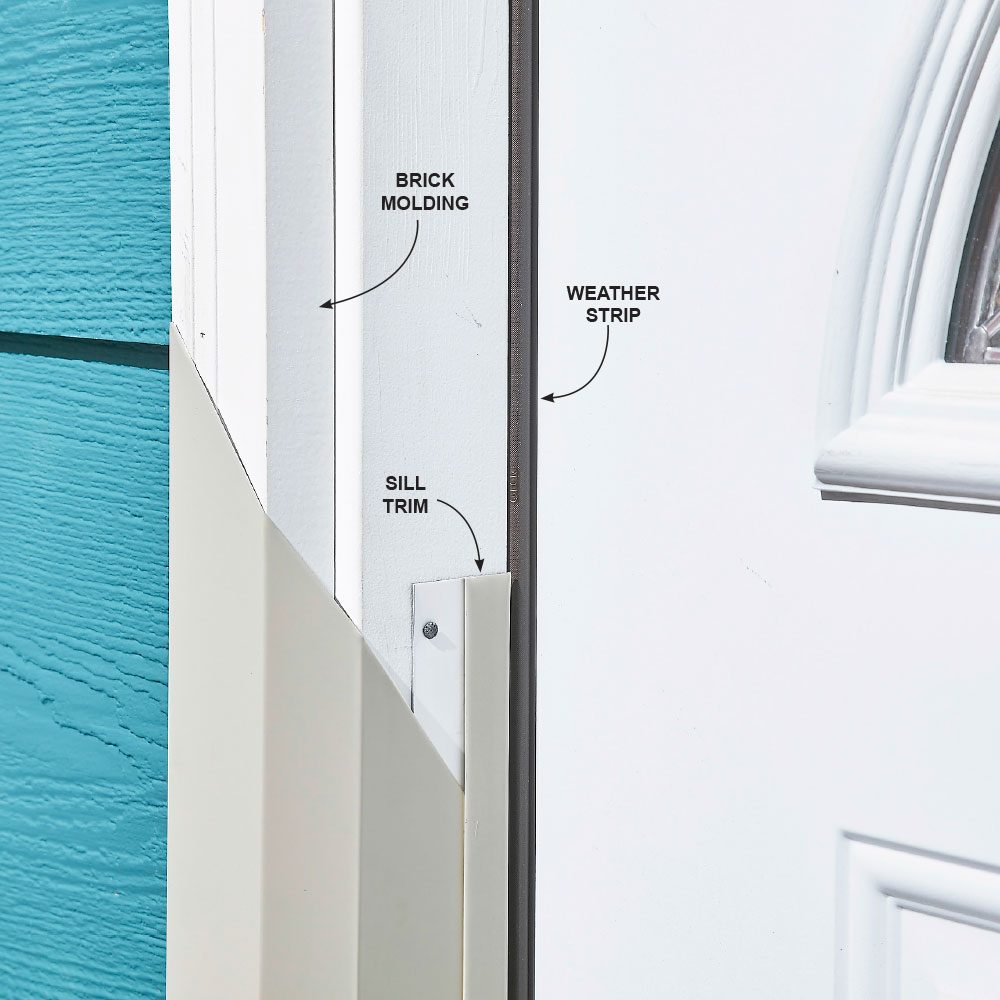
Hide Nails With Sill Trim
Most window and door trim fasteners get hidden under the siding, but that’s not always the case. For example, when you’re covering brick molding and doorjambs together, it’s difficult to secure the trim near the door without leaving the fasteners visible. That’s where sill trim comes in handy.
Nail sill trim close to the weather strip, and then slide the trim piece into the sill trim. The process of making sill trim is exactly the same as for fascia trim except you overbend the bottom lip and then collapse it in on itself. You basically create a double hem.

Make a Small Template First
There’s nothing worse than perfectly executing a difficult profile only to realize that the proper color is on the wrong side. Avoid this by creating a small template or prototype. Cut a small section of coil and bend it the way you think it should be. Mark the appropriate measurements on the side of the template that should be facing up when the coil is in the brake. Also indicate in which order the bends should be completed.
Before bending the “real deals,” take the template to the wall to see if it fits properly. When covering existing wood, you want the trim pieces to fit a little loosely when possible, maybe by 1/8 in. or so. This will reduce the chance that the metal will buckle if the wood is warped or twisted.

Create a Rib on Wide Pieces
It’s hard to keep wide pieces of trim from buckling and looking wavy. If the exposed surface on a fascia or other trim profile is more than 8 in., create a rib to stiffen it. With the show side up, make about a 30-degree bend. Rotate the piece show side down and bend another 30-degree angle. Flip the piece again and bend it back 30 degrees, or so the face of the fascia is straight. (I know 30 degrees x 3 doesn’t equal 180 degrees, but the point of reference changes with every bend.)
Use the rubber strip on the moving hinge as a measuring guide. Practice on a small piece first. You can buy an accessory that makes ribs in one pass. It’s a must-have tool for a full-time tin-bender but not worth $370 for one or two projects.

We’d Love to Hear From You
Do you have a jobsite or tool tip that makes your work-life easier, safer, or just more fun? Why not share it with your construction comrades? Plus, you can show off your professional prowess to your family and friends.
Click the image below to send us your Pro Tips! Please include an image if you can. We will contact you if we run your submission on the site.

